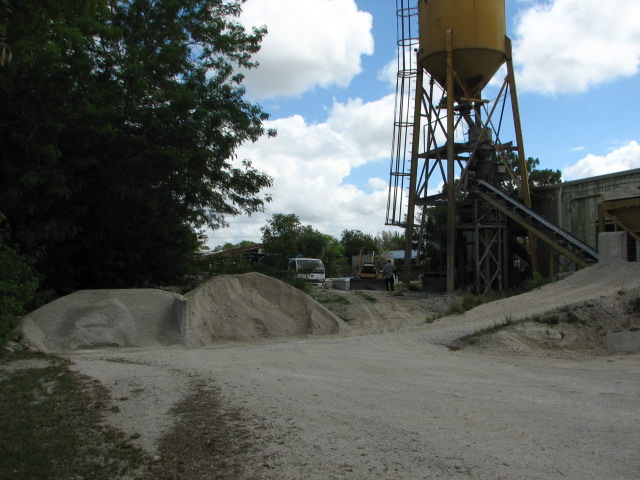What is a Hazard in Industrial Hygiene?
In our last blog on industrial hygiene and a CIH (Certified Industrial Hygienist) we explained that industrial hygiene concerns the recognition, evaluation, and control of hazards in the workplace. This is best handled by a CIH who has the education, training, experience, and credentials. Further, the courts recognize a CIH as an expert in the field. This blog deals with the recognition of hazards.
Definition of Hazard
Merriam-Webster dictionary (www.merriam-webster.com) defines hazard as a source of danger. Wikipedia (en.wikipedia.org) says that a hazard is an agent which has the potential to cause harm to a vulnerable target. In occupational health and safety, it concerns the potential to injure workers or cause health problems. Therefore, in industrial hygiene the hazard could be due to the operation or task, the materials, and the work environment. Sources of hazards can be chemical, biological, physical, electromagnetic, or radioactive, among others. Examples are solvents, viruses, mold, bacteria, particulates, ultraviolet light, microwaves, heat, absence of oxygen, and more. They can be of natural origin or manmade. Ultraviolet rays from the sun are natural and present an occupational health hazard for lifeguards. The use of solvents to clean machine parts represents a manmade hazard source.
Manufacturing Hazards
Since industrial hygiene began with manufacturing, we will start there. Hazards can occur from operations, raw materials, chemicals used, noisy equipment, heat, and the workplace atmosphere. Operations creating hazards include cutting, grinding, blasting, fabricating, cleaning, and painting. Chemicals with hazards can be solvents, epoxies, cleaners, pesticides, and paint. Particulates can be generated from blasting, sanding, painting, welding, and soldering. Noise can be generated from machines, compressed air usage, boom boxes, airplanes, trucks, and more. And there are certainly more which we have not even mentioned.
Construction Hazards
 Many of the industrial hygiene hazards in construction are the same as in manufacturing. However, certain sources are more unique or prevalent due to the nature of construction. Examples are concrete installation, finishing, and removal; paver installation; remodeling and demolition involving lead based lead paint, asbestos containing materials, bird feces, mold, and bacteria; digging in soil; and painting.
Many of the industrial hygiene hazards in construction are the same as in manufacturing. However, certain sources are more unique or prevalent due to the nature of construction. Examples are concrete installation, finishing, and removal; paver installation; remodeling and demolition involving lead based lead paint, asbestos containing materials, bird feces, mold, and bacteria; digging in soil; and painting.
Maritime Hazards
The focus here is in shipyards and boatyards. Sources of hazards could include all of the above. Further, heat and oxygen deficient atmospheres can be even more prevalent than in manufacturing or construction. Asbestos and lead based paint are often common sources. And of course noise inside boats and ships can be major due to tight quarters.
Office & Other Workplace Hazards
And finally, there are sources of hazards in offices and other workplaces. These sources can affect indoor air quality on a short term or long term basis. Janitorial chemicals and vacuums can have an immediate effect on workers. The health effect may be acute or immediate, or chronic or long term. Damp buildings and mold can affect hyper-sensitized individuals. Office machines can be sources of volatile organic compounds (VOCs), including formaldehyde. Adjacent industrial operations or remodeling can be sources of the construction and manufacturing hazards listed above.
 So there are the details on industrial hygiene sources of hazards in various workplaces. Stay tuned for our next in depth blog on the process of identifying specific hazards from given operations. In the meantime, if you need any help, Environmental Safety Consultants is here. We are a Florida licensed environmental engineering company with a CIH on staff. We have the credentials and experience to help you complete your industrial hygiene project. We have a proven track record with a Florida licensed environmental engineer and mold assessors, plus degreed environmental scientists on staff. We specialize in industrial hygiene, indoor air quality, asbestos, lead paint, silica, noise, and more. We are just a telephone call (800-226-1735) or an e-mail away (escinc@verizon.net). Contact us today!
So there are the details on industrial hygiene sources of hazards in various workplaces. Stay tuned for our next in depth blog on the process of identifying specific hazards from given operations. In the meantime, if you need any help, Environmental Safety Consultants is here. We are a Florida licensed environmental engineering company with a CIH on staff. We have the credentials and experience to help you complete your industrial hygiene project. We have a proven track record with a Florida licensed environmental engineer and mold assessors, plus degreed environmental scientists on staff. We specialize in industrial hygiene, indoor air quality, asbestos, lead paint, silica, noise, and more. We are just a telephone call (800-226-1735) or an e-mail away (escinc@verizon.net). Contact us today!
